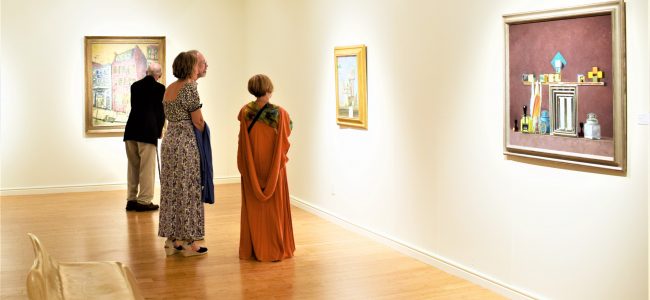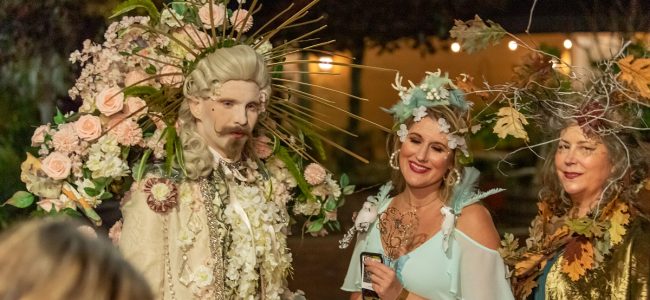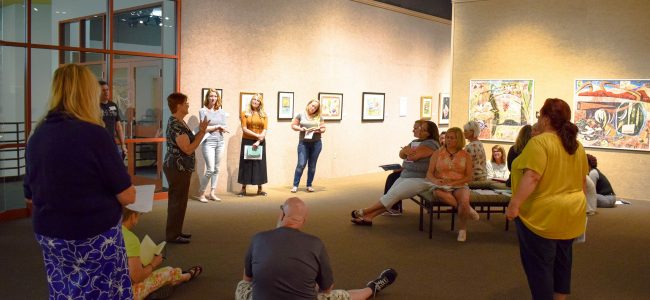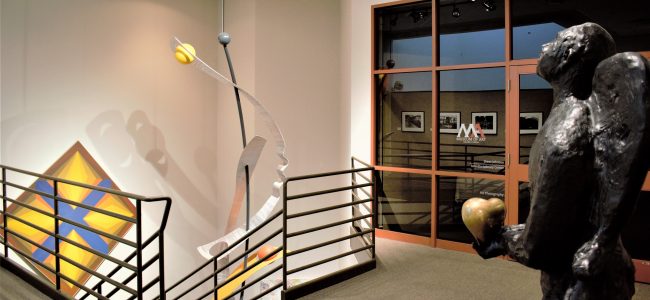In The News
Artist brings ‘Creation and Destruction’ to DeLand Museum SPECIAL TO THE BEACON
March 19th, 2019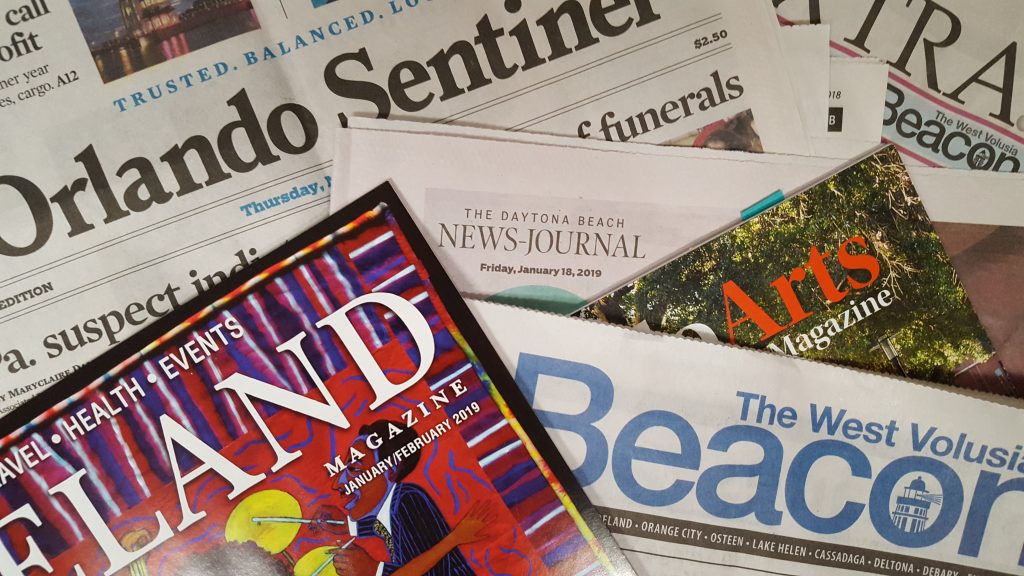
https://www.beacononlinenews.com/arts_and_entertainment/artist-brings-creation-and-destruction-to-deland-museum/article_1f67e4fe-49a2-11e9-a6d9-c72c9937217c.html
![]()
In the early 1980s, artist Sandy Winters would sit in gardens. She started to see how plants were relating to each other as if they were poking or pinching each other. Over time, the plants in Winters’ paintings, drawings and block prints became more anthropomorphic, mechanical, robotic and even bomblike. She realized she was really interested in the nature/culture clash, and creating that in her art.
That clash can be witnessed in the exhibition “Sandy Winters — Creation and Destruction,” on display through Sunday, March 24, at the Downtown Galleries of the Museum of Art – DeLand, 100 N. Woodland Blvd.
The exhibit features 46 fantastical works in which Winters morphs mechanical objects with strange plants and bodily organlike objects and casts them in vast, detailed, busy scenarios that sometimes include a line of tiny marching elephants, toy army tanks or a cityscape in the background.
Winters’ mediums include oil, acrylics, graphite, collage and block prints, and one of her favorite techniques is taking a small block print or graphite drawing and extending its boundaries on a canvas in every direction to create a new, huge painting.
“I started to see how plants are so anthropomorphic,” Winters said. “Vegetables at the markets started to look like masks, and that was when I was listening to mythology, women’s roles in mythology, the Dionysian myth, so all of these plants started taking on this kind of primordial, masklike imagery.”
Over time, her plants became more bomblike, more torpedolike.
“Then they started to get feet. Now they’re starting to look like robots, so they’re half human, half vegetation,” Winters said.
Meanwhile, she began to see the linear forms in her collage works as “representing architecture — humans’ attempts to structure nature, so then you’ve got nature and culture talking to each other.”
Winters insists her art is not overly grim. She sees dark humor and even whimsy at play in her bizarre scenarios.
“I depict an environment of largely abstracted organic and mechanical forms, which, if I have succeeded, are forbidding and yet playful, inexplicable and yet evocative, indeterminate and yet on a subliminal level intimately familiar,” she said.
That play between the ominous and the playful is evident in her oil painting Seven Deadly Sins, with its tiny, alien, buglike creatures marching beneath a strange tree that’s sprouted human arms, while the work’s centerpiece depicts a robotic contraption that’s either devouring, or perhaps generating or creating, what look to be human brains.
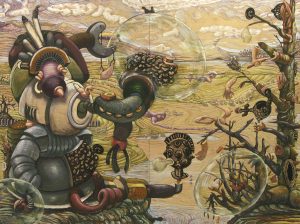
“I do believe that the poignancy of life is because we have it juxtaposed to death,” Winters said. “That’s why I’ve always been interested in my work to have opposites rubbing up against each other. Nothing is ever one or the other.”
“Death makes life more poignant, and it makes life a little scarier as we get older,” she said with a sardonic laugh. “But the urgency is not there if you live forever.”
Gallery hours are 10 a.m.-4 p.m. Tuesday-Saturday, and 1-4 p.m. Sunday.
Special-exhibition gallery admission costs $10, and is free for museum members and for children age 12 and younger.
For more information, call 386-734-4371 or visit www.MoArtDeLand.org.
